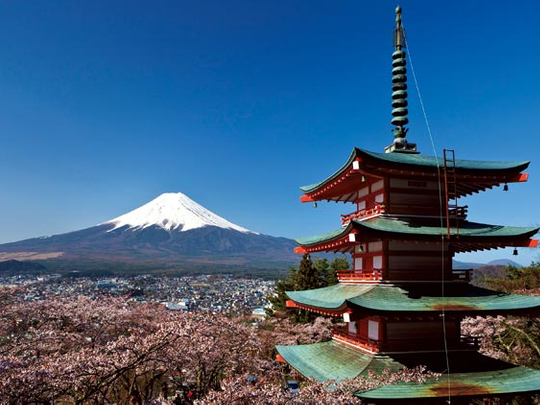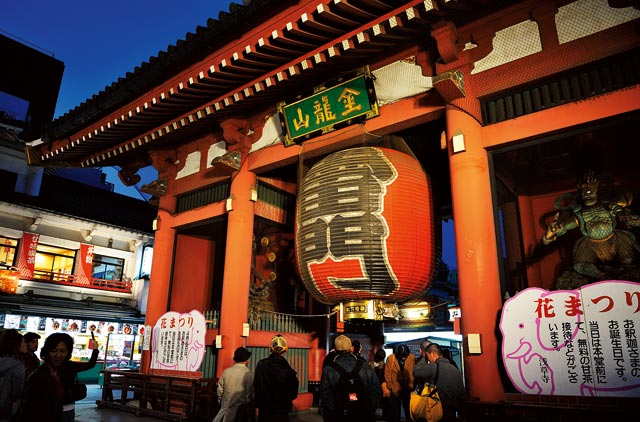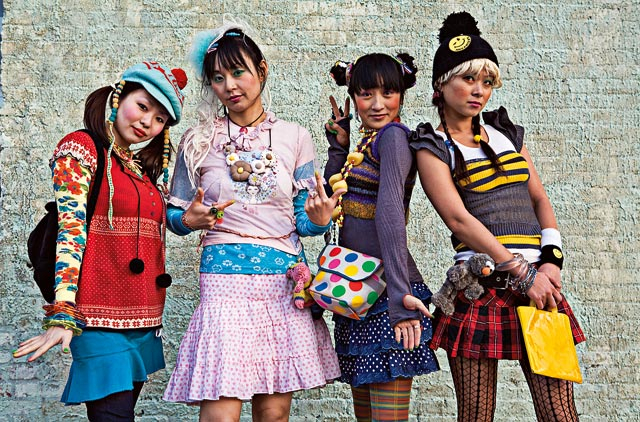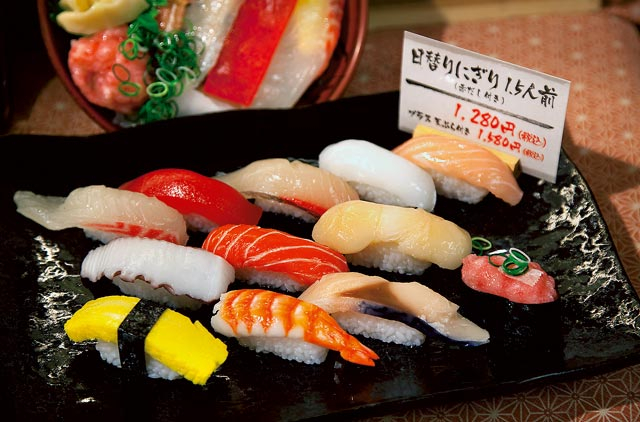
It was like a horror movie. The rubbery white disc was writhing and pulsating on the hot plate as if it were still alive. But this was no a film – this was dinner. Well, for some of us… Abalone, or ‘awabe’, is a type of edible sea snail, valued along with the likes of the pufferfish and sea urchin as a rare delicacy in Japan. This plastic-like oval, which was quivering on the teppanyaki griddle before me, has a nutty, sea-watery taste, and can cost more to buy per kilogram than gold, or so our Japanese guide, Daiko, told us. All the same, as it flipped and wriggled before my eyes, I decided to save some Yen on my meal that night and give this particular gourmet treat a miss…
This was one of many moments during my visit to Japan that the country astonished me. From cat cafes - where you can pet a kitty with your coffee - to sensor-operated loo seats - which gave me the fright of my life the first time I entered my hotel bathroom - there were countless moments on my trip to Tokyo that had me widening my eyes with surprise and saying, “Only in Japan”.
This ability to thrill and delight helps explain why the capital consistently tops favourite-city lists across the world – it bagged the number one spot in CNN’s travel guide this year, despite the impact of the 2011 tsunami. A kaleidoscope of colour and contradiction, i9t feels both familiar and deeply foreign all at once, neither Western nor Eastern, with old and new mingling in a curious mixture of sci-fi style towers and ancient temples, raucous neon nightlife and traditional tea ceremonies.
With a whole host of wonderful and unusual activities to offer families, couples or lone travellers and with hotel prices more affordable than ever as the country works to recover from last year’s natural disaster, a voyage to the land of the rising sun has never been more within your reach.
All a bit fishy
Activities that would be mundane anywhere else are elevated to the level of psychedelic spectacle in the Japanese capital and, if you’ve only got a limited amount of time, all guidebooks will recommend that you start out early and head to the real-life theatre that is Tsukiji fish market, one of the city’s most defining must-sees. Every morning except Sunday, auctions are held from 5am to 10am, during which chefs and food sellers bargain for almost 500 different types of sea product for use in restaurants across the city. Get there as close to 5am as possible to experience the raucous commotion of fishermen hawking their wares and to marvel at the curtains of sea creatures dripping in salty drapes from the 1,700 stalls. The market specializes in maguro (tuna) and it’s a unique experience to watch fish the size of small cars being hefted onto trailers or sawn into glistening vermillion strips. Japan consumes about 30 per cent of the world’s tuna catch and eats the majority of it raw as sashimi, which requires the very best cuts of fish and the highest levels of care – any of the restaurants within the market are the ideal place to sample some of the freshest fish you’ll ever taste. Although the market’s atmosphere is frantic, most people are quite friendly and tolerant to curious onlookers, who must watch from designated areas. In stark contrast to the frenetic pace of business inside, at the foot of the bridge leading into the market is a tranquil Shinto shrine named Namiyoke inari-jinja (or ‘protection from waves’) where traders pray for good fortune and prosperity.
A city panorama
For a less fishy taste of the city, Tokyo Tower is an Eiffel-Tower-inspired structure that was built in 1958 and affords spectacular 360-degree views at two separate viewing platforms, the Main Observatory and the Special Observatory. Take in the tangle of concrete jungle, cool parks and, on clear days, admire the majestic sight of Mount Fuji, which can be seen to the south. To the east of the tower is Shiba park, a green space that used to be the graveyard of the Tokugawa family a powerful Japanese clan who are said to have descended from Emperor Seiwa (850–880). Today much of the park is part of a golf driving range, but parts of it feature landscaped woods and shaded pools and are the perfect spot to enjoy the weather with iconic views of the Tokyo Tower..
A taste of tradition
No trip to Japan would be complete without the opportunity to admire the beautiful architecture and picturesque pagodas of one of the traditional temples, the most spectacular and important of which is the Senso-ji temple in Asakusa, Northern Tokyo. Its history has roots in AD628, when legend has it that two fisherman fished a gold statue of the Buddhist goddess of mercy from the Sumida River and built a shrine at the site. Enter through the Kaminarimon (Thunder Gate), a richly decorated structure featuring a giant red and black paper lantern boldly illustrated with storm clouds and lightning. Kimono-clad locals and a sea of eager tourists make this a classic photo spot. Walk through the 200-metre Nakamise-dori, a shopping street bursting with stalls selling everything from traditional souvenirs such as fans and obi sashes, to examples of modern Japanese eccentricity – a wardrobe of different goldfish-costumes for dogs was one highlight. This is the perfect place to purchase keepsakes from your trip and you’ll be sure to come away with anything from pretty woodcut reproductions to samurai swords and sushi crockery. As you approach the temple itself you can glimpse the city’s latest landmark, the Sky Tree, a TV tower which is currently the tallest tower in the world (as opposed to the tallest building – an accolade still held by the Dubai’s Burj Khalifa). The heady smell of incense permeates the atmosphere as people waft curls of smoke from the ornate incense burner over themselves in a ritual for health. Follow the example of the locals and wash your hands and mouth with water scooped up from wooden ladles outside the temple. Here you can also throw a few yen into the collection box in return for a paper fortune, retrieved from one of hundreds of tiny printer-cabinet-style drawers.
Strike a pose
For an experience of more modern of Japanese culture, head to Harajuku in the western part of Tokyo, where Japanese youngsters indulge their outlandish side at the weekend by dressing up in cosplay – costume-play – encompassing a range of themes, including Gothic Lolitas or ‘Goth-Loli’ – a fashion genre in which girls decked up in alternative babydoll dresses and gravity-defying heels make Lady Gaga look dowdy. Harajuku station was the main station for the Tokyo Olympic village in 1964 and it remains a centre for international culture in its candybox of sartorial tastes, from luxury brands to chic and cheap boutiques. Soak up the psychedelia along Takeshita-dori, a narrow ally between Meji-dori and Harajuku, where sugary teeny-bopper cuteness clashes with the leather and metallics of rock-inspired fashions as well as international couture. Parallel to Takeshita-dori is the more understated and sophisticated Omote-sando. Its wide, tree-lined avenues showcase eclectic high-end labels, from Fendi to Dior. And leading off Omotoe-sando, a narrow lane to the left buzzes with up-and-coming designer boutiques. Whether you’re a follower of fashion or a culture vulture, these offbeat shopping streets all throb with the dynamism and creativity of a world-class capital city.
Gadgets and geek culture
If it’s not clothes you’re shopping for, Akihabara is the place to go. A hotspot for all things electronic and the centre for ‘otsku’ or ‘geek’ culture, the market’s origins can be traced back to the end of the Second World War, when the Japanese army used the area to sell off left-over equipment to students of the nearby universities, who used the parts to make radios to sell on for much-needed cash. The focus has since changed to televisions, white goods, computers and gimmicky gadgets of all kinds, which can often be bought for around 30 per cent off their usual retail price. Today, the starry eyes of anime characters and squiggly neon of street signs scream at you from all angles on advertising hoardings, promoting shops or the latest deals. Challenge yourself to buy the oddest, most useless gadget you can find, or take a break from shopping with a visit to one of the area’s bizarre novelty cafes, notably the kitsch maid cafes, where girls dressed up in frilly maid uniforms serve you tea, coffee and cake.
Gourmet grub
If you prefer a less saccharine feed, you’ll be spoilt for choice at one of Tokyo’s thousands of excellent restaurants. As the country with the record highest number of restaurants with three Michelin stars – even more than France – the Japanese are serious about gastronomy. Careful preparation and fastidious attention to detail are crucial elements of all Japanese cuisine – food is seen as a form of art and even the more simple dishes are often prepared by chefs who have trained for many years. While there are many unusual dishes to be had – my abalone for one or, even more challenging, the freshest fish you can possibly get (odorigui – still alive or ‘still dancing’!) – there’s a whole lot more to Japanese cuisine than just sushi. There are a baffling variety of places and serving styles to sample, from noodle bars and sushi belt cafes to restaurants specialising in tempura, skewers (kushiyaki) or teriyaki, served on zashiiki seating (low wooden tables at which you sit on a floor cushion). I enjoyed some of the most scrumptious dishes I have ever tasted during my time in the country, from shabu shabu (meat or fish thinly sliced and served raw, which you cook in boiling water), to okonomiyaki (savoury pancakes, a speciality of the Osaka region). Vegetarians may also rejoice – eating meat was actually prohibited in the country until 1868 and there’s a whole rainbow of fresh vege dishes to be savoured, from buckwheat noodles (zaru soba) and hearty Udon ramen (thick noodles served in vegetable broth, to countless tofu concoctions.
What I experienced was just the tip, a mere maki snack starter of the feast available for the intrepid traveler. As our flight back to Dubai took off there was no doubt in my mind that I would be back to experience more dawns in the land of the rising sun.
Japanese life through a lens
Manners and traditions are an important part of Japanese life. Whether it’s the sight of an office worker bowing as he chats on his mobile phone, or the fact that any gratuity you try to leave a waiter will most likely be politely returned, any visitor will come across at least some elements of the charming quirks and formalities that make up this fascinating culture.
Take Tokyo Station at rush hour. Built in 1914, the capital’smain intercity rail link saw the launch of the first shinkansen (bullet train) and currently handles almost two million passengers a day. As a major transport hub in what is the most crowded metropolis on the planet, you would expect commuter chaos, but the calmly ordered queues on the platform and impeccably on-time train timetables argue otherwise.
This unexpected place of calm was where I found myself while waiting in line for the train to Yamagata to visit the Panasonic factory. Although Japan is well-known for being ahead of the curve when it comes to technology, and indeed the lenses made at the Yamagata factory are cutting edge, a tour of the facility had an air of stepping back in time about it.
First of all our arrival was delayed so that the employees could ‘finish making the flags’ in preparation for our welcome. Sure enough, when we finally got there, we were greeted by a line of 30 smiling employees, all dressed in the same uniform and proudly waving branded white flags.
The concept of the salaryman and his almost familial dedication to his job is a well-known characteristic of Japanese society, and despite economic changes affecting the younger generation, the notion of a ‘job for life’ still permeates. It’s clearly still present at Panasonic, where the walls were lined with headshots of every worker, arranged in a family-tree-style hierarchy according to their performance, while electronic counters above each workspace compared employees’ progress with their daily targets.
The level of commitment and concentration was humbling and, as our car pulled away to return to the station, we were sure to follow our guide’s advice and reciprocate the flag-waving ritual by waving our hands until we were completely out of sight.














